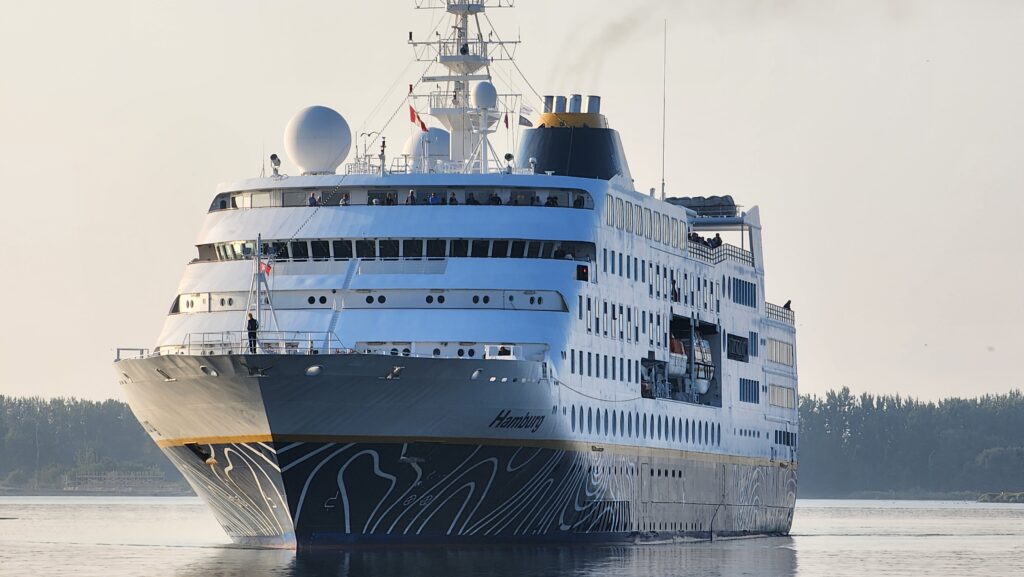
About the Port
Since 1793, the Port of Toronto has served as Toronto’s gateway to the St. Lawrence Seaway and to marine ports around the world. Serving primarily as a bulk cargo destination, the port boasts a unique location minutes from Toronto’s downtown and moves goods from countries as far away as Germany, South Korea, China, Brazil, Australia, South America and the United States. In addition to managing the movement of ships through the harbour, PortsToronto is the owner and operator of Marine Terminal 52 and the Cruise Ship Terminal within the Port of Toronto.
The Port of Toronto is one of Canada’s inland ports and is situated on the northwest shore of Lake Ontario. Located minutes from Toronto’s downtown core, the Port provides a seamless network of cost-effective intermodal links to road, rail and air transportation, serving as a unique and crucial piece of economic infrastructure. Marine cargo arriving and managed at the Port of Toronto generated approximately $460 million in economic activity and 2,000 jobs in Ontario in 2022. Port also welcomes cruise ships and passengers from around the globe through the Cruise Ship Terminal.






Commercial Tonnage
The number of cargo ships visiting the Port of Toronto remained consistent in 2024, with 173 ships visiting the Port of Toronto and delivering a range of bulk, project and general cargo products totalling 2,056,924 metric tonnes.
In addition to importing 591,265 metric tonnes of sugar from Central and South America to support Toronto’s food and beverage industry, the Port moved more than 500,868 metric tonnes of salt, much of which is used for Toronto’s roads during the winter months. With construction in Toronto showing no signs of slowing down, the Port also moved 840,570 metric tonnes of cement (a 6 per cent increase over 2023), 58,904 metric tonnes of aggregate, and 64,586 metric tonnes of steel products, including coil, pipe, and rebar, which transited through the Port to construction sites throughout the Greater Toronto Area.
Economic Impact
The Port of Toronto moved more than 2 million metric tonnes of cargo and welcomed 34 cruise ships and nearly 18,000 visitors to its Cruise Ship Terminal in 2024. Another strong year in marine imports and cruise ship activity highlights the important role the Port plays in Toronto’s economy by enabling the movement of goods and people, which in turns drives tourism and trade for the region.
Commercial Cargo
An independent report entitled Economic Impacts of Marine Shipping in the Port of Toronto – published in September 2023 by Martin Associates confirms that marine cargo handled at the Port of Toronto generated $463.5 million in economic activity and 1,989 jobs in Ontario in 2022. This study focuses exclusively on the cargo component of the Port of Toronto’s operation and does not reflect the Port’s full diversity of uses, which includes its Cruise Ship Terminal and Marine Terminals.
Cruise
The Port of Toronto is a popular Great Lakes cruising Port of call, in 2024 it welcomed 34 cruise ships and nearly 18,000 passengers. The year 2025 will usher in another strong cruise ship season, with a record 47 ships expected to call between April and October, bringing more than 20,000 passengers to Toronto to enjoy all the city has to offer. Cruise the Great Lakes, an initiative led by the Conference of Great Lakes Governors and Premiers, expects cruising in the Great Lakes to generate an economic value of over $200 million USD to the region’s Ports and communities in 2024.
Film
PortsToronto leases two of its Marine Terminals to Cinespace, which in turn provides production facilities for film and television companies such as Netflix. This activity supports Toronto’s $2 billion film industry, much of which is concentrated in the port lands area. The Port also provides the backdrop for many film productions including Law & Order Toronto, Reacher and The Boys.
PortsToronto
PortsToronto was established for the purpose of operating the Port of Toronto, one of Canada’s major commercial ports. The Port Authority possesses legislated responsibility for all its port activities related to shipping, navigation, transportation of passengers and goods, and the handling and storage of cargo. It owns and operates the Billy Bishop Airport, the Port of Toronto (consisting of Marine Terminal 51, Warehouse 52 and the Cruise Ship Terminal) and the Outer Harbour Marina.
PortsToronto is responsible for ensuring the safety and navigation of Toronto’s waterways for both recreational boating and commercial shipping to Canada’s biggest city. The Port has authority over the waters in the Harbour of Toronto. Click here to see a map of the Port Authority’s jurisdiction.
Toronto Harbour
The Port and Harbour of Toronto attend to nearly 10,000 recreational boaters; the largest harbour tour fleet in North America; city and airport ferries; visiting cruise ships; and 220 metre-long lakers which are continuously delivering cargo throughout the year.
Our Facilities
PortsToronto maintains a paved facility of over 50 acres (20 hectares) located adjacent to downtown Toronto. The yard provides convenience, with excellent access to the railroads, as well as all major highways. This facility is fully bonded, has 24-hour security, and is an ISPS Code Facility, attracting several long-term leases.
The Port of Toronto’s marine terminals include inside and outside storage, and some 1,800 metres of berthing space for ships carrying general cargo. All berths are in excess of Seaway depth (27 feet or 8.2 metres.
Additional public and private berths are available around the Port for loading and unloading of bulk materials. The Port of Toronto is operated by PortsToronto, with the marine terminals operated in partnership with Logistec Inc.
Port of Toronto Stakeholders
- Lehigh Hanson
- Lafarge Canada Inc.
- Cargo Dockers Ltd.
- Strada Aggregates
- Redpath Sugar
- Rideau Bulk Terminals
Port Map
The Port of Toronto, one of Canada’s largest major inland ports, is situated on the northwest shore of Lake Ontario.
